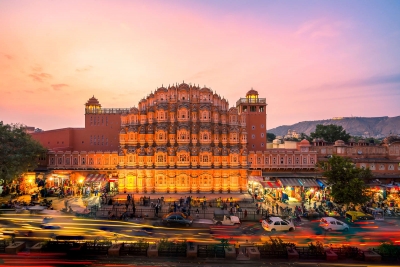
The capital and the largest city of the state of Rajasthan, India, Jaipur was founded by Maharaja Swami Jai Singh II on November 18, 1727. Believed to be the first planned city in India, Jaipur was designed by the king himself who was assisted by Vidyadhar Bhattacharya, a scholar in Mathematics and Science from Bengal. To design the city, Vidyadhar referred to ancient Indian literature on astronomy and books by Ptolemy and Euclid, both Greek mathematicians.
The principles of Vastu Shastra, a traditional Indian system of architecture, were also followed during the design of the city.
Construction of the major palaces and roads in the city took nearly four years.
Since it was meant to be the kingdom’s capital, huge walls were constructed around the city with seven gates. This earned Jaipur the name ‘the walled city’.
The city itself was divided into nine blocks. Two of these blocks consisted of the state buildings and palaces while the remaining seven were allotted to the general public.
When the Prince of Wales visited the city in 1878, the whole city was painted pink to welcome him. Thus the name ‘the pink city’ came into being. To retain the charm of the historic era, even today all the palaces and the state buildings of the city are painted in pink.
The Creative City
Apart from its architecture, Jaipur is known for its arts and crafts. In 2015, the city was added to UNESCO’s Creative Cities Network as a City of Crafts and Folk Art. In the 18th Century, Jaipur was called the House of the 36 Industries (Chattis Karkhanas) for being an important trade centre that was largely supported by crafts and folk art. In honour of this period, today, specific streets and markets in the city are dedicated to each of these industries.
Picture Credit : Google

